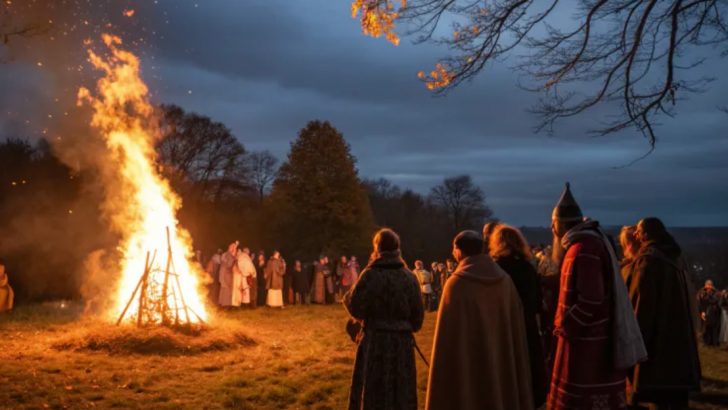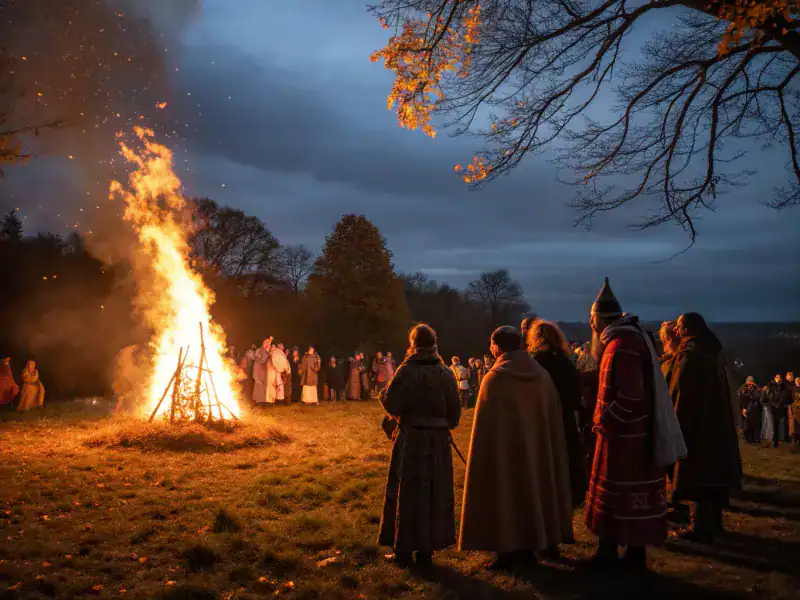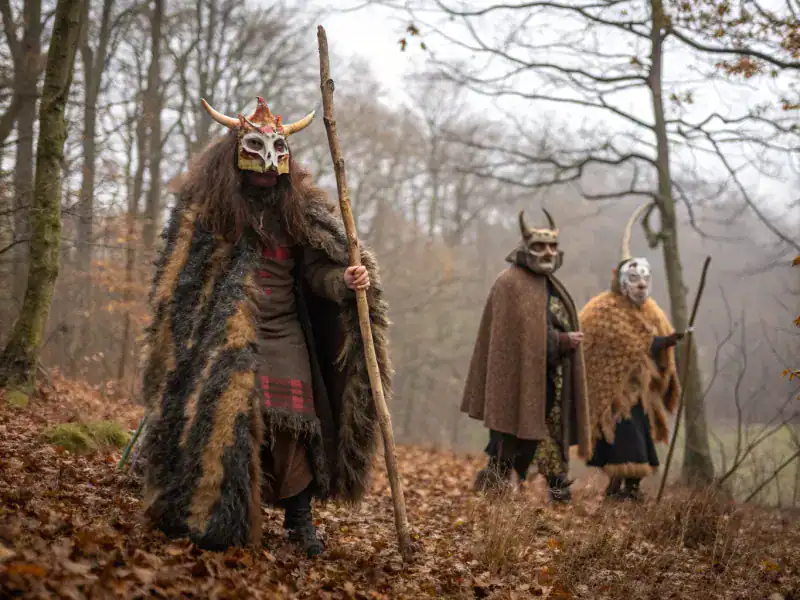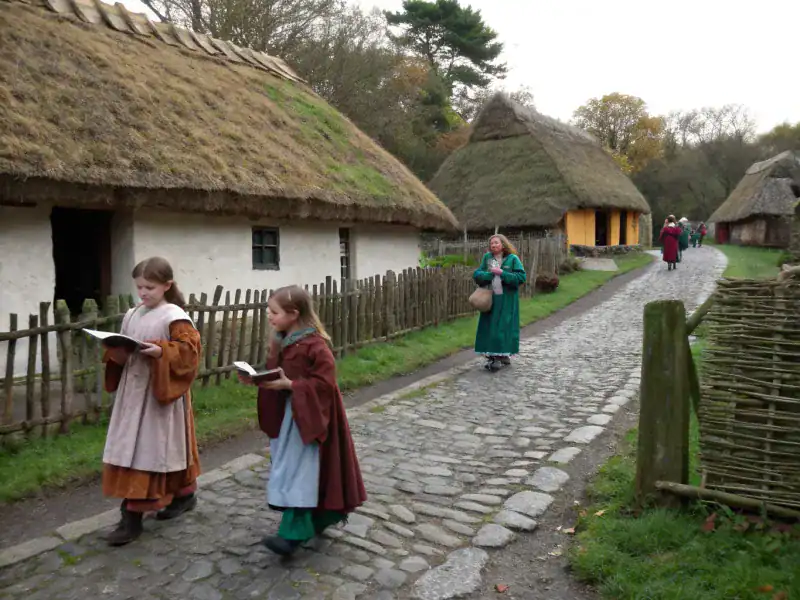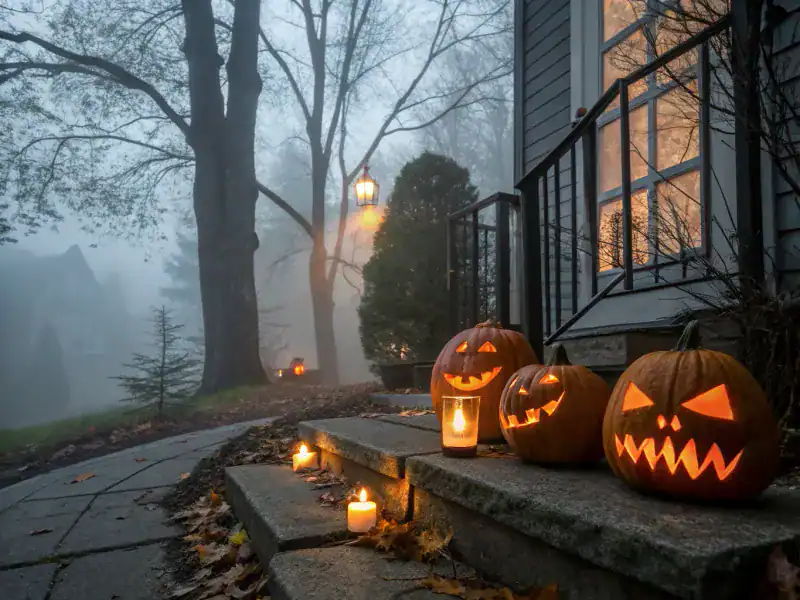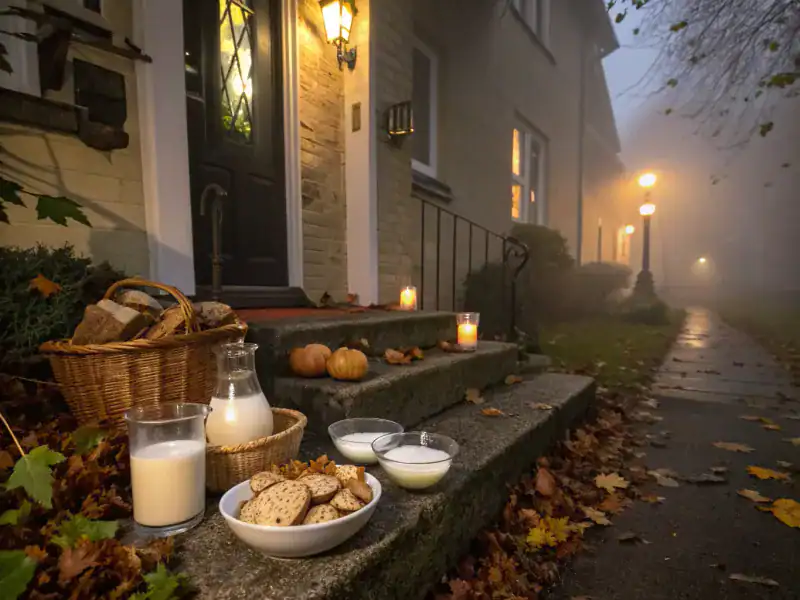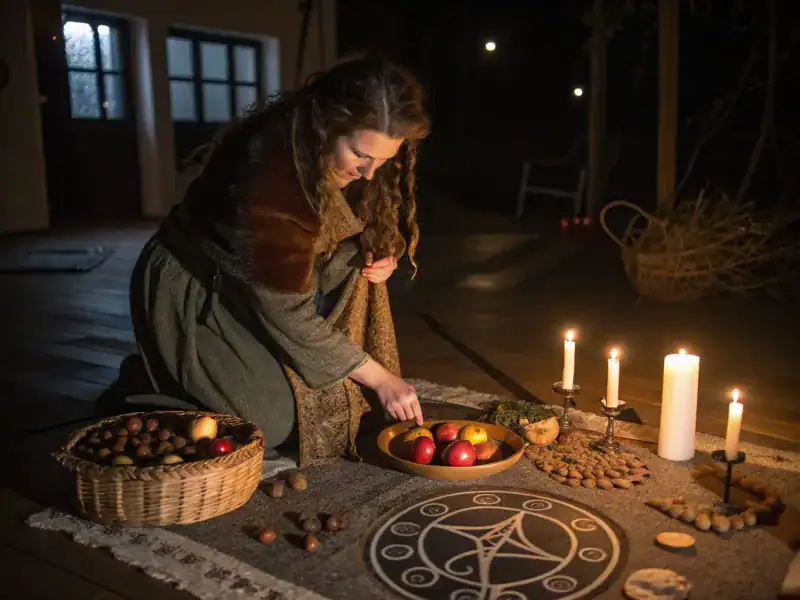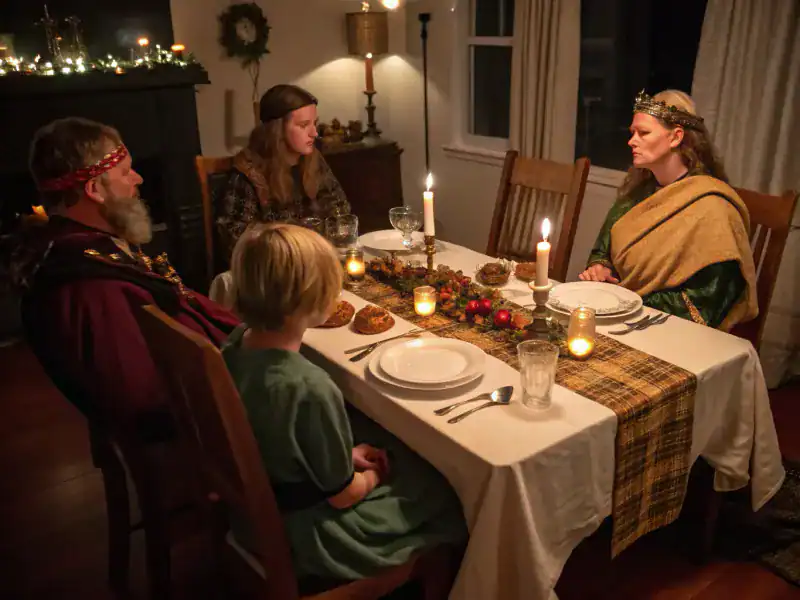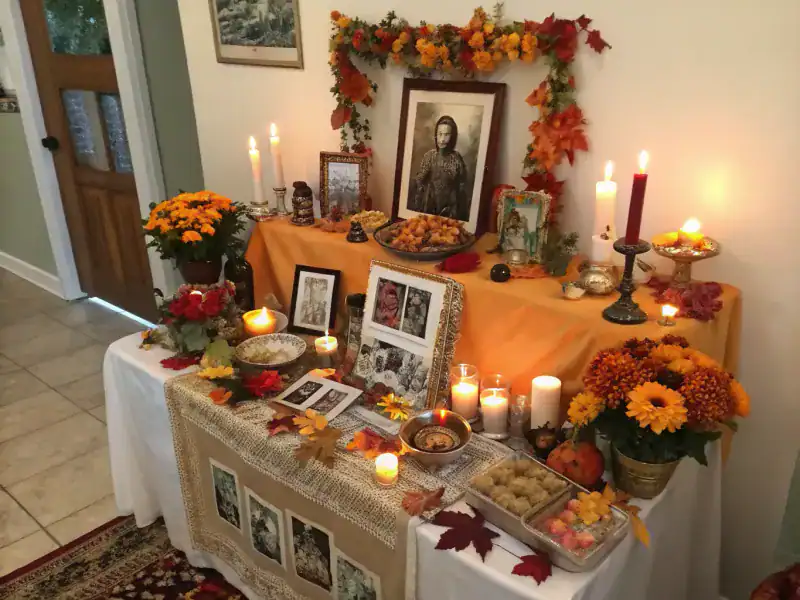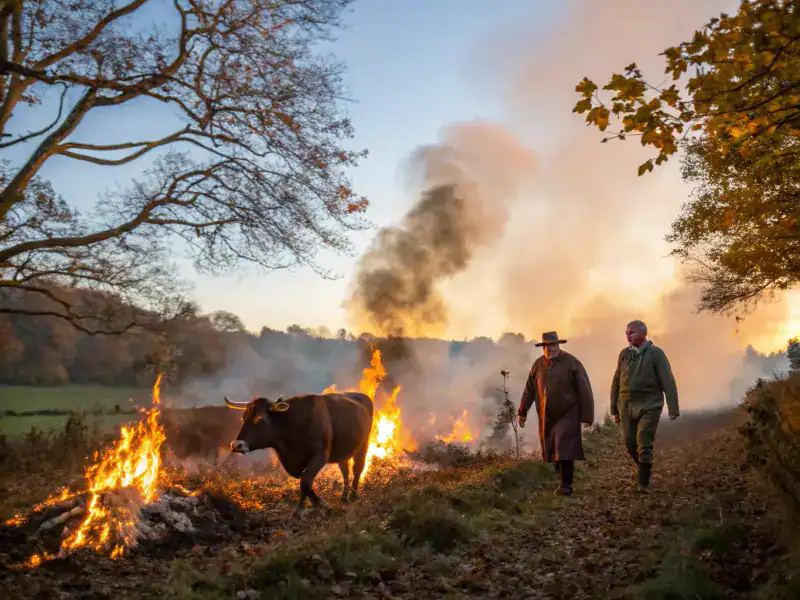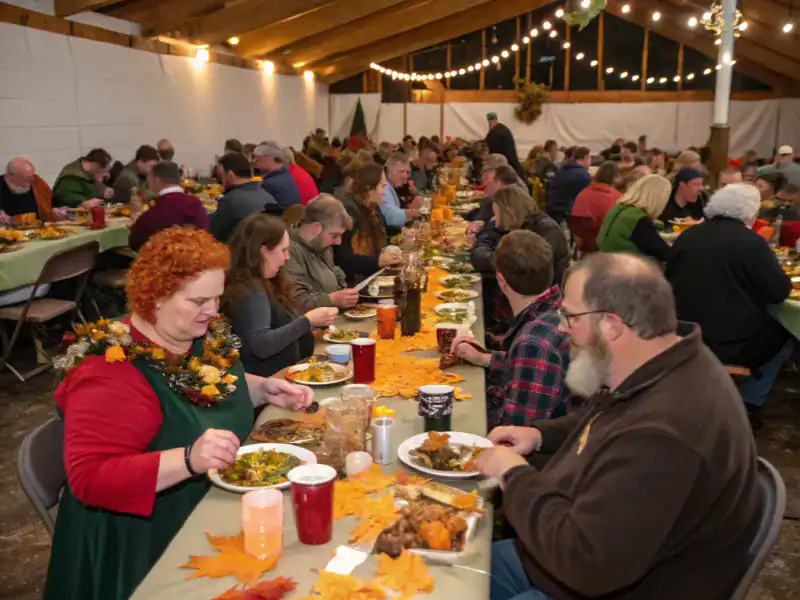Long before trick-or-treating and carved pumpkins became Halloween traditions, ancient Celtic people celebrated Samhain on November 1st.
This sacred festival marked the end of harvest season and the beginning of dark winter months.
Samhain was a time when people believed the boundary between our world and the spirit world grew thin, allowing ghosts and magical beings to walk among the living.
1. Lighting Bonfires
Massive flames lit up the darkness as entire villages came together for one of Samhain’s most powerful rituals. Communities built towering bonfires that crackled and roared, representing the sun’s warmth during approaching winter darkness.
People believed these fires held magical protective powers against evil spirits wandering the earth. Families would put out their home fires completely, then carefully carry burning embers from the communal bonfire back to relight their hearths.
This practice symbolized community unity and spiritual renewal. The smoke from these sacred fires was thought to cleanse both people and animals, preparing everyone for the challenging winter months ahead.
2. Dressing as Spirits
Imagine wrapping yourself in animal furs and hiding your face behind a scary mask to fool wandering ghosts! Ancient Celts wore these creative disguises because they genuinely feared encounters with spirits roaming freely on Samhain night.
Animal skins, strange masks, and unusual clothing helped people blend in with supernatural visitors. If ghosts couldn’t recognize you as human, they might leave you alone and pass by harmlessly.
This clever survival tactic eventually transformed into our modern costume-wearing tradition. Today’s superheroes and monsters trace their roots directly back to these ancient disguises meant for spiritual protection rather than fun.
3. Mumming and Guising
Children and young adults traveled from house to house wearing costumes and performing entertaining songs, poems, or jokes. In exchange for their performances, households rewarded them with food, coins, or treats to enjoy.
This practice, called mumming or guising, kept communities connected during the dark season. Performers often blackened their faces or wore masks as part of their disguises, adding mystery to their visits.
Householders who gave generously were believed to receive good fortune, while stingy ones might face tricks or bad luck. Sound familiar? This ancient custom directly inspired our modern trick-or-treating tradition that kids love today.
4. Carving Turnips
Before pumpkins became popular, Celts grabbed turnips, beets, and gourds to create their spooky lanterns. Carving these tough vegetables took serious effort and strong hands, unlike today’s softer pumpkins.
Families carved frightening faces into these vegetables, then placed candles inside to make them glow eerily. These jack-o-lanterns sat on windowsills and doorsteps, serving two important purposes simultaneously.
The scary faces frightened away evil spirits who might harm the household. Meanwhile, the gentle light guided friendly ancestor spirits safely home for a visit. When Irish immigrants came to America, they discovered pumpkins were much easier to carve than turnips!
5. Offering Food and Drink
Plates of fresh food and cups of drink appeared outside homes as darkness fell on Samhain night. Families carefully prepared these offerings specifically for the aos sí, magical fairy folk and wandering spirits passing through.
Nobody wanted to anger these powerful supernatural beings! Leaving generous portions showed respect and hopefully earned protection for the household throughout the coming year.
Milk, bread, butter, and ale were common offerings placed at doorways or field edges. By morning, the food remained untouched by human hands, but people believed spirits had absorbed its essence and energy, accepting the gift gratefully.
6. Divination and Fortune-Telling
Samhain night offered the year’s best opportunity for predicting the future, especially regarding love and marriage. Young people particularly enjoyed these fortune-telling games, hoping to glimpse their future spouses.
Apples and hazelnuts featured prominently in these mystical practices. Girls might peel an apple in one long strip, then toss the peel over their shoulders, hoping it would land shaped like their future husband’s initial.
Hazelnuts placed in fire represented potential romantic partners—if your nut burned quietly, marriage would be peaceful, but if it popped loudly, expect a stormy relationship! These playful yet serious rituals made Samhain exciting for everyone.
7. Dumb Supper
Families set their table with an extra place for someone who wouldn’t physically arrive—a beloved relative who had died. This haunting tradition, called the dumb supper, meant eating in complete silence throughout the entire meal.
The deceased person’s favorite foods filled their plate, and their preferred drink filled their cup. Complete quiet allowed the spirit to join the family peacefully, sharing the meal’s energy without distraction.
Even children stayed silent, understanding the meal’s sacred importance. Breaking the silence might offend or frighten away the visiting spirit. This deeply emotional practice honored the dead while comforting the living with continued connection.
8. Offerings and Altars
Special altars transformed ordinary homes into sacred spaces where the living and dead could reconnect. Families carefully arranged photographs, treasured possessions, and meaningful objects belonging to departed loved ones.
Favorite foods, beloved drinks, and cherished items surrounded these personal shrines. A grandfather’s pipe, a grandmother’s favorite flower, or a child’s beloved toy might appear on the altar.
Candles flickered beside these offerings throughout Samhain night. People believed spirits could absorb the essence of these gifts without physically consuming them. Creating these altars brought comfort to grieving families while honoring those who came before, keeping precious memories alive across generations.
9. Cleansing Rituals
Farmers carefully guided their livestock between two roaring bonfires in a dramatic purification ceremony. The smoke and flames were believed to possess magical cleansing properties that protected both animals and humans from harm.
Walking through the smoke served practical purposes too—it helped eliminate fleas and parasites from cattle before winter housing. Burning specific herbs added extra protective power to the ritual.
People also walked between the fires themselves, believing the smoke washed away bad luck and evil influences. This powerful combination of spiritual belief and practical animal care prepared entire communities for winter’s challenges ahead.
10. Community Gatherings and Feasts
Samhain brought entire communities together for massive feasts celebrating the harvest’s end. Long tables overflowed with roasted meats, fresh bread, vegetables, fruits, and plenty of ale for everyone to share.
People competed in games, told stories, sang songs, and danced late into the night. These joyful gatherings strengthened friendships and reminded everyone they’d face winter’s hardships together as one community.
Despite the festival’s serious spiritual aspects, Samhain was also genuinely fun! The combination of honoring the dead, protecting against spirits, and celebrating with neighbors created a unique holiday that balanced reverence with revelry perfectly.
Lover of good music, reading, astrology and making memories with friends and spreading positive vibes! 🎶✨I aim to inspire others to find meaning and purpose through a deeper understanding of the universe’s energies.

